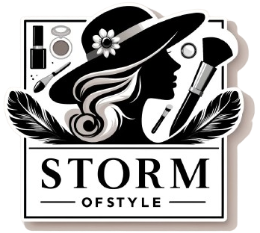We all dream of having luscious, healthy hair, but sometimes, despite our best efforts, our locks can become damaged. Whether it’s due to heat styling, coloring, or environmental factors, damaged hair can be a real downer. But don’t worry, there are ways to rescue your tresses and bring them back to life. In this guide, we’ll explore simple and effective methods to repair damaged hair, using insights from experts and unique studies. As Dr. Francesca Fusco, a NYC dermatologist, says, “Damaged hair is like a fragile fabric. You need to handle it with care, using gentle products and avoiding harsh treatments” (Prevention Magazine).
Understanding Hair Damage
Hair damage can occur for various reasons, including excessive heat styling, chemical treatments, and environmental exposure. Signs of damaged hair include split ends, breakage, dryness, and dullness. To effectively treat and prevent hair damage, it’s essential to understand its causes.
Common Causes of Hair Damage
- Heat Styling: Frequent use of blow dryers, straighteners, and curling irons can weaken hair strands and lead to breakage.
- Chemical Treatments: Coloring, perming, and relaxing hair can strip it of its natural oils, making it brittle.
- Environmental Factors: Sun exposure, pollution, and harsh weather can all take a toll on your hair.
- Over-washing: Washing hair too often can remove natural oils, leading to dryness.
- Poor Diet: Lack of essential nutrients can affect hair health, making it prone to damage.
Personal Anecdote: I used to straighten my hair almost daily, thinking it was the only way to keep it looking good. But over time, I noticed my hair becoming dry and brittle. It was then I realized the importance of giving my hair a break from heat styling and started exploring healthier hair care routines.
Steps to Repair Damaged Hair
1. Regular Trims
Getting regular trims is crucial for maintaining healthy hair. Guy Tang, celebrity hair colorist, advises, “The first step to repairing damaged hair is to get regular trims. This will remove split ends and prevent further damage” (#mydentity Website). Aim to trim your hair every 6-8 weeks to keep it looking fresh and healthy.
2. Gentle Hair Care Products
Choose shampoos and conditioners that are formulated for damaged hair. Look for ingredients like keratin, biotin, and coconut oil, which can help nourish and repair hair. Dr. Francesca Fusco recommends, “Using gentle products is key to handling damaged hair. Look for shampoos and conditioners with nourishing ingredients” (Prevention Magazine).
3. Deep Conditioning Treatments
Incorporate deep conditioning treatments into your hair care routine. George Northwood, a celebrity hairstylist, suggests, “Hair masks are a great way to give your damaged hair a boost of hydration and nourishment” (George Northwood Salon). Look for masks with ingredients like shea butter, argan oil, or avocado oil, and leave them on for at least 30 minutes for maximum benefit.
4. Heat Protection
Minimize heat styling as much as possible. When you do use heat tools, always apply a heat protectant to shield your hair from damage. Guy Tang also emphasizes the importance of avoiding excessive heat styling and using heat protectants (#mydentity Website).
5. Leave-In Conditioners
Leave-in conditioners can be a game-changer for damaged hair. They help detangle, hydrate, and protect your hair from further damage. Kristin Ess, hairstylist and founder of Kristin Ess Hair, advises, “Look for a lightweight formula that won’t weigh your hair down” (Kristin Ess Hair).
6. Protein Treatments
Protein treatments can strengthen hair and prevent breakage. They work by replenishing the protein that hair loses due to damage. According to the International Journal of Trichology (2019), protein plays a crucial role in maintaining hair strength and integrity. Incorporate a protein treatment into your routine once a month to keep your hair strong and resilient.
7. Healthy Diet
A balanced diet rich in vitamins and minerals is essential for healthy hair. Ensure you’re getting enough protein, iron, and vitamins A, C, and E, as they all contribute to hair health. Drink plenty of water to keep your hair hydrated from the inside out.
Psychological Impact of Hair Damage
Hair damage doesn’t just affect your appearance; it can also impact your mental well-being. The Journal of Cosmetic Dermatology (2021) reveals that hair damage can lead to decreased self-esteem and negative body image. Addressing hair damage can thus improve not only your looks but also your confidence and overall mental health.
Personal Anecdote: There was a time when my hair was so damaged that I felt self-conscious about it. I avoided social gatherings and felt less confident at work. Once I started taking better care of my hair and saw improvements, my confidence grew, and I felt more comfortable in my skin.
Preventing Future Damage
1. Protective Hairstyles
Opt for hairstyles that protect your hair from damage, such as braids, buns, or ponytails. Avoid tight hairstyles that can pull on your hair and cause breakage.
2. Avoiding Harsh Chemicals
Try to minimize the use of chemical treatments. If you must color your hair, opt for ammonia-free dyes and space out your treatments to give your hair time to recover.
3. Sun Protection
Protect your hair from the sun by wearing hats or using hair products with UV filters. Just as the sun can damage your skin, it can also harm your hair.
4. Gentle Detangling
Be gentle when detangling your hair, especially when it’s wet. Use a wide-tooth comb and start from the ends, working your way up to avoid breakage.
5. Silk Pillowcases
Switch to silk pillowcases to reduce friction while you sleep. This simple change can help prevent breakage and keep your hair looking smooth and healthy.
Embracing Natural Hair
One of the best ways to prevent and repair hair damage is to embrace your natural hair texture. This means minimizing heat styling and chemical treatments, and allowing your hair to grow and thrive in its natural state. Celebrate your curls, waves, or straight hair, and find products that enhance your natural beauty.
Personal Anecdote: Embracing my natural curls was a turning point in my hair care journey. I stopped straightening my hair daily and started using products that enhanced my curls. Not only did my hair become healthier, but I also felt more confident and true to myself.
Conclusion
Repairing damaged hair is a journey that requires patience and dedication. By understanding the causes of hair damage and implementing effective solutions, you can restore your hair to its healthy, beautiful state. Remember to use gentle products, minimize heat styling, and embrace your natural hair texture.
As Dr. Francesca Fusco wisely advises, “Damaged hair is like a fragile fabric. You need to handle it with care, using gentle products and avoiding harsh treatments” (Prevention Magazine). With the right approach, you can rescue your damaged locks and enjoy the confidence that comes with healthy, gorgeous hair.




